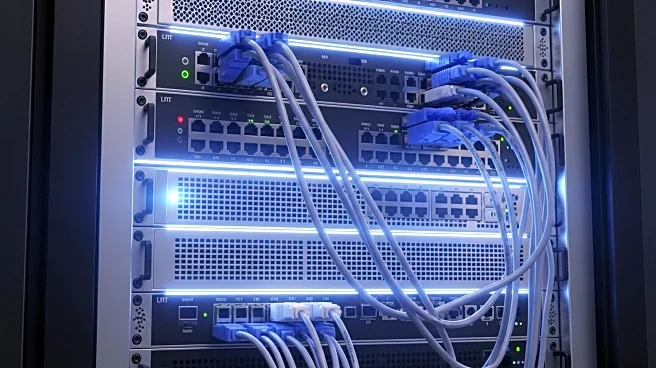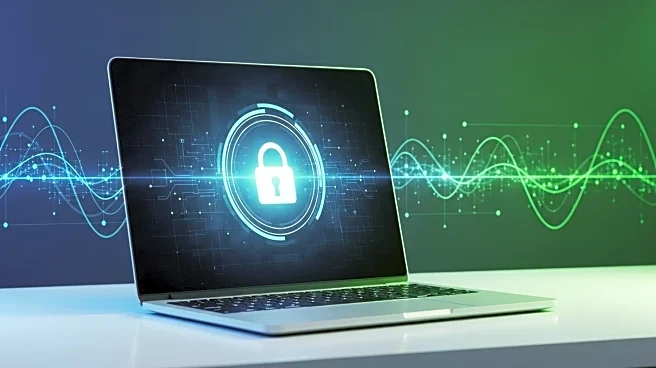What is the story about?
What's Happening?
A threat group identified as TA585 is utilizing compromised websites and GitHub issues to execute ClickFix attacks, distributing MonsterV2 and other malware, according to a report by Proofpoint. TA585 operates independently across the attack chain, leveraging its own infrastructure and malware-as-a-service (MaaS) providers. The primary malware payload, MonsterV2, functions as a backdoor, stealer, and loader. Initially, TA585 used Lumma Stealer, but shifted to MonsterV2 in May 2025, also incorporating Rhadamanthys infostealer in its campaigns. The group employs web injects to display fake CAPTCHAs, prompting users to execute PowerShell commands that download malware from attacker-controlled domains. TA585's tactics include abusing GitHub issues to mimic security warnings, leading victims to malicious sites. MonsterV2 is advertised on cybercrime forums, with prices ranging from $800 to $2000 monthly.
Why It's Important?
The activities of TA585 highlight significant cybersecurity threats, particularly the use of ClickFix campaigns to spread sophisticated malware like MonsterV2. This malware poses risks to individuals and organizations by exfiltrating sensitive data, including login credentials, financial information, and personal tokens. The ability of MonsterV2 to establish remote access and manipulate crypto addresses underscores the potential for financial theft and privacy invasions. The exploitation of GitHub issues for phishing attacks further emphasizes the need for enhanced security measures and awareness training. Organizations must prioritize the prevention of unauthorized PowerShell execution and educate users on recognizing phishing attempts to mitigate these threats.
What's Next?
As TA585 continues to refine its attack strategies, cybersecurity experts anticipate further developments in malware distribution techniques. Organizations are likely to increase investments in security infrastructure and user training to counteract these threats. The cybersecurity community may also see advancements in detection technologies to identify and neutralize such malware more effectively. Legislative efforts could emerge to address the growing concerns around malware-as-a-service platforms and their role in facilitating cybercrime. Stakeholders, including tech companies and government agencies, may collaborate to develop comprehensive strategies to combat the proliferation of sophisticated malware campaigns.
Beyond the Headlines
The rise of TA585 and its use of MonsterV2 malware reflect broader trends in cybercrime, where threat actors increasingly leverage MaaS platforms to enhance their capabilities. This development raises ethical and legal questions about the responsibility of service providers in preventing the misuse of their platforms. The ongoing evolution of malware tactics also suggests a shift towards more targeted and deceptive phishing techniques, challenging traditional security paradigms. As cyber threats become more complex, the importance of cross-sector collaboration and innovation in cybersecurity solutions becomes paramount.
AI Generated Content
Do you find this article useful?













